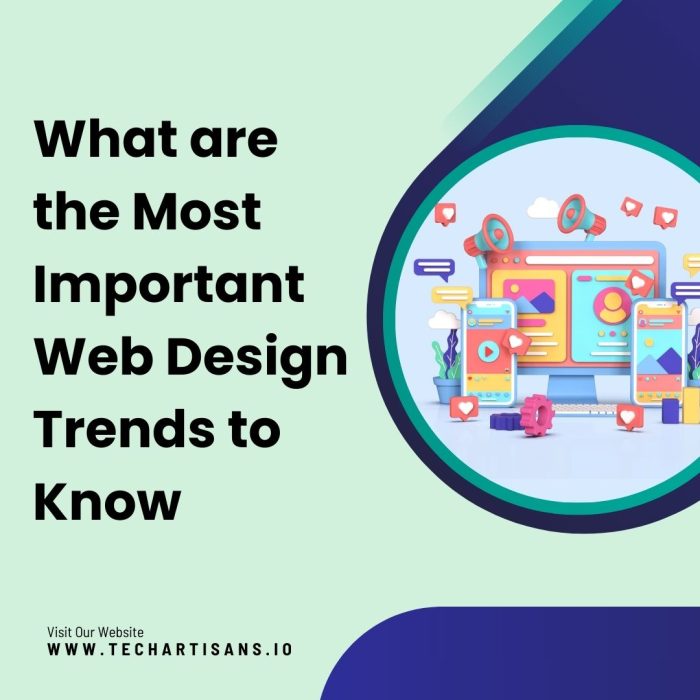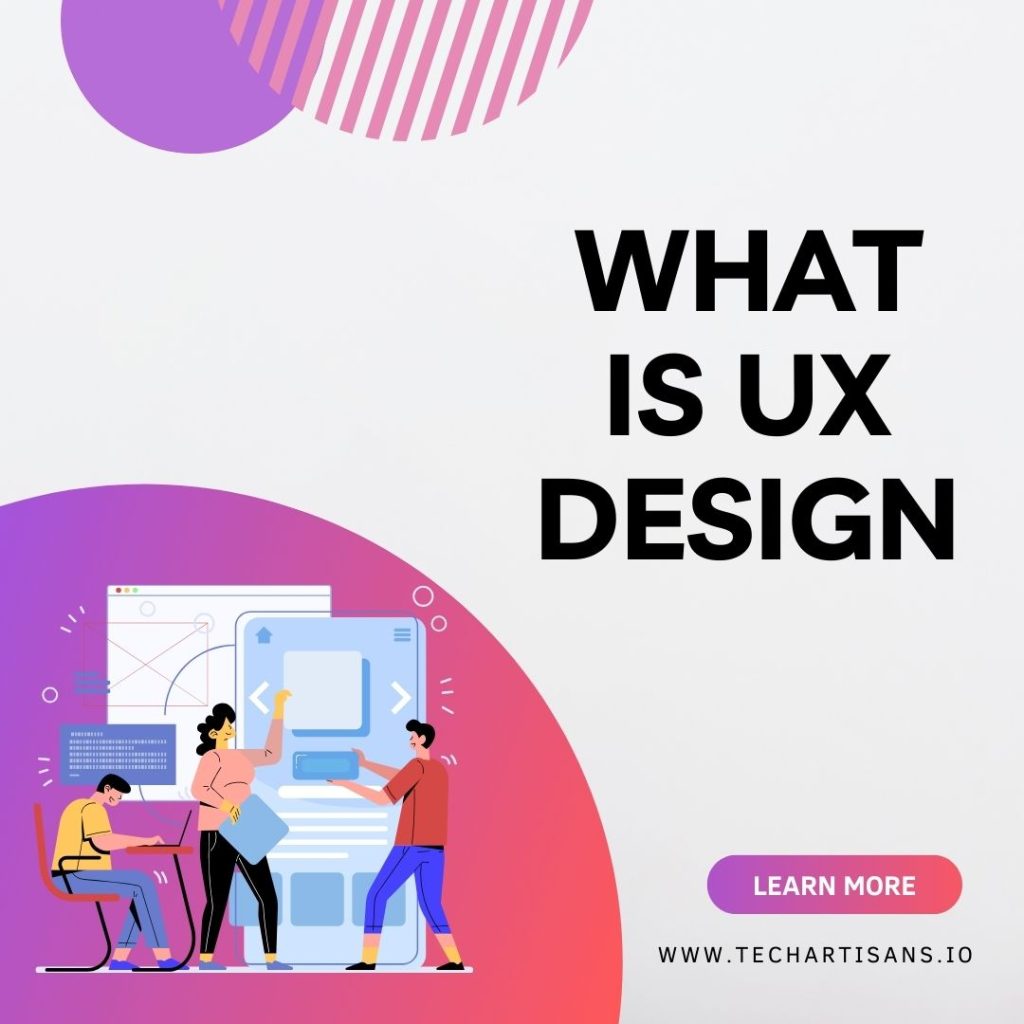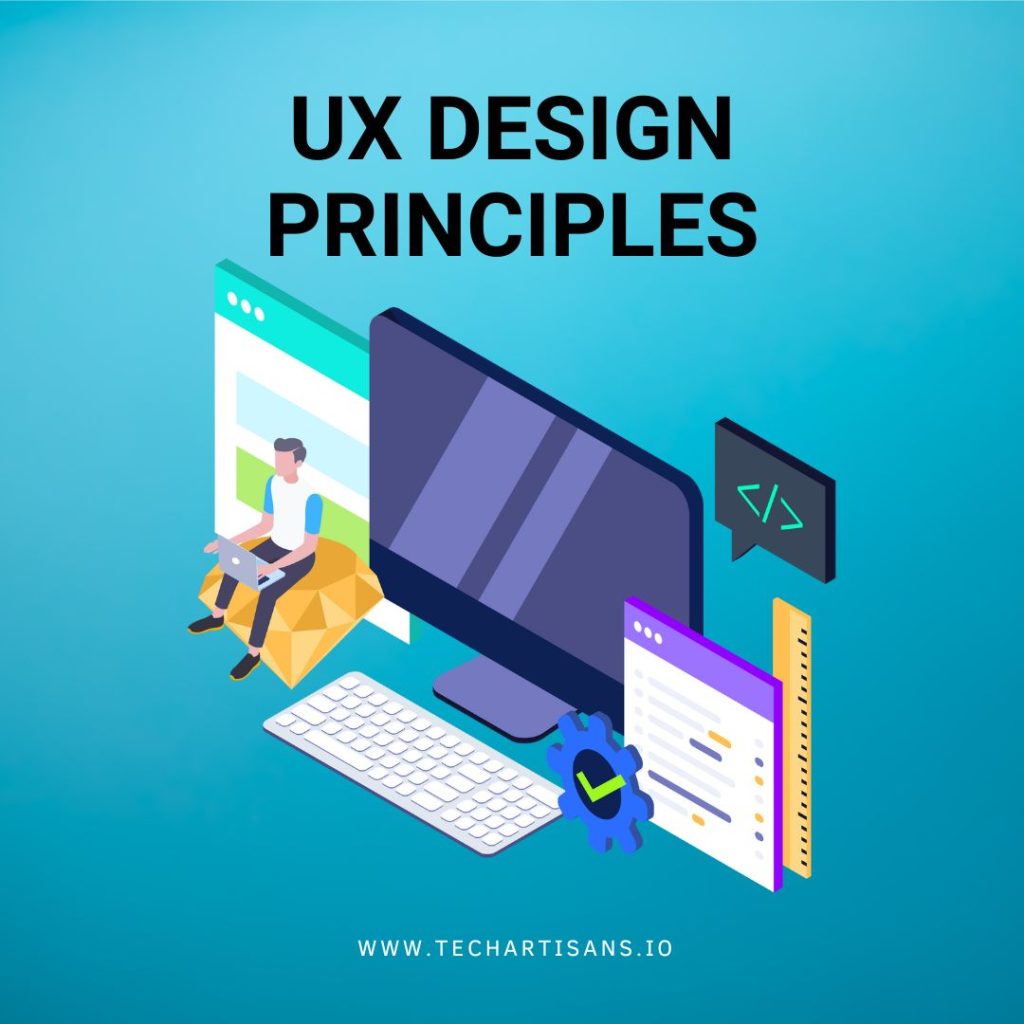In an ever-evolving digital landscape, staying updated with the latest web design trends is paramount for business owners. Web design goes beyond looks and affects how users perceive your brand. A good design can engage users, lower bounce rates, and boost conversions. Staying up-to-date with website design trends gives your business an edge and meets user expectations. Let’s explore the future of digital design together.
The Rise of Micro Animations
Micro animations, small yet powerful elements in web design, have started making significant waves. These subtle animations, as discussed in our guide to web design trends for 2023, effortlessly enrich user interaction and enhance the overall user experience. Let’s explore how these tiny titans of design can make a big impact on your website.
1. Subtle Animations to Enhance User Engagement
Subtle animations, or micro-animations, are a crucial part of today’s web design trends, essential in enhancing user engagement. They guide users, providing visual cues and feedback, thus making the interface more intuitive. By creating an element of surprise and delight, these minor design elements contribute significantly to a positive user experience, enriching user engagement and encouraging a prolonged stay on the website.
2. Real-world Example: ASK Resource Center
The ASK Resource Center website is an excellent example of effective micro animation use. Their navigation menu employs subtle hover animations, transforming a simple action into an engaging experience for the user. The animations are aesthetically pleasing without being intrusive, enhancing the overall user experience and making the website more intuitive and user-friendly.
Embracing Illustrations in Web Design
Let’s explore why this visually engaging trend makes web design waves.
1. Benefits of Illustrations
Illustrations load faster than traditional photos, which makes your website faster and improves SEO, a concept further explored in our article on the most popular web design trends. They are also great for explaining abstract ideas and creatively showcasing your brand’s story and values.
2. Highlighting the Firewatch Video Game Website
The Firewatch video game website exemplifies the effective use of illustrations in web design. The site features a single, large, beautifully stylized illustration that immediately immerses visitors into the game’s unique aesthetic and atmosphere.
The Dark Mode Revolution
Let’s explore how the Dark Mode revolution reshapes our web interaction experiences.
1. Benefits for Users in Low-light Environments
Dark Mode is particularly beneficial for users in low-light environments. Reducing glare and light emissions minimizes eye strain and makes night-time browsing more comfortable. Moreover, Dark Mode conserves battery power on LED screens, a feature highlighted in our post about why responsive web design is important, creating a more sustainable user experience.
2. Increasing Popularity of Toggle Switches
The rising popularity of toggle switches is evidence of the Dark Mode revolution in web design trends. These switches allow users to shift between Light and Dark Modes according to their preference or ambient light conditions.
Monochromatic Designs
Let’s explore how this minimalist trend impressively makes its mark in digital design.
1. Effectiveness of Single-color Designs
Using a single color or monochromatic design, as mentioned in our latest web design trends article, creates a pleasing and focused visual experience, reducing distractions and enhancing professionalism, which works well with many brands.
2. Example: Lemonade’s Insurance Solution
Lemonade’s website nails a monochromatic design with its bold pink color matching its brand. It keeps things simple, drawing attention to its innovative insurance solutions and projecting a modern and professional image.
Modern Minimalism in Web Design
Embracing the age-old adage “less is more,” modern minimalism has surfaced as a dominant player in web design trends, offering an uncluttered, sleek, and user-friendly approach to digital aesthetics.
1. Balance Between Aesthetics and Functionality
Finding the right balance between looks and usability, a principle detailed in our web design best practices guide is crucial in web design. The minimalist design helps achieve this balance by simplifying the user experience, making it easy to navigate while still looking visually appealing.
2. Example: New York-based Cleaning Company, Oboosho
Oboosho, a New York cleaning company, follows modern minimalism in web design with clean lines, white space, and muted colors. This design directs attention to their services, making the site easy to read and navigate.
Power of Storytelling and Interactivity
The potency of storytelling goes beyond aesthetics, immersing users in an interactive narrative that enhances the overall browsing experience while reinforcing the brand message.
1. Interactive Elements to Boost Engagement
Interactive elements, such as animations, quizzes, or clickable infographics, attract user attention, a strategy we elaborate on in our guide to creating engaging user flows and encouraging engagement. By actively involving users in their browsing experience, these elements promote longer site visits, greater user involvement, and enhanced overall satisfaction.
2. Example: Nexos Intelligent Disinfection landing page
Nexos Intelligent Disinfection’s landing page shows how interactivity in web design can engage users with animated graphics and clickable elements, helping them explore the disinfection solutions and better understand the company’s offerings.
Neomorphism: A Fresh Design Approach
Neomorphism is a new web design trend combining skeuomorphism and flat design, making digital interfaces tactile with soft, plastic-like elements that add depth and realism.
1. Blend of Skeuomorphism and Flat Design
Neomorphism mixes realistic looks from skeuomorphism with the simplicity of flat design, a concept further explored in our article on UX vs. UI design, giving flat surfaces a 3D appearance for a visually engaging yet user-friendly website experience.
2. UX Challenges
While neomorphism offers visual intrigue, it can pose user experience (UX) challenges, primarily accessibility and contrast issues. These can be navigated using adequate color contrast to clearly define interactive elements and balance aesthetics and functionality.
Engaging Users with Rotating Animations
Engaging users with rotating animations has also influenced web design trends. This technique employs movement to catch the user’s attention, making the browsing experience more dynamic and interactive.
1. Catching Attention with Motion
Rotating animations can quickly capture users’ attention, drawing their eyes toward key content or calls to action. When employed correctly, they can add sophistication to a website, enhancing the overall aesthetic while maintaining functionality.
2. Example: The Disruption Company’s Website
The Disruption Company’s website brilliantly exemplifies the use of rotating animations, a trend discussed in our web design trends for agency websites. Its homepage features a rotating globe animation that immediately draws in the visitor, creating a dynamic and captivating visual experience.
Non-Traditional Scrolling Techniques
Non-traditional scrolling techniques are pushing the boundaries of user interaction and engagement in current web design trends, offering innovative ways to navigate and explore digital content.
1. Shift From Vertical to Horizontal Scrolling
Switching from up-and-down to side-to-side scrolling, as discussed in our web design process guide, is a creative break from the usual web design. It offers a unique user experience, like flipping through a book, making the digital content exploration engaging and unexpected.
2. Example: Gelateria Amanda’s website
Gelateria Amande’s website uses horizontal scrolling for a distinctive journey through its story and products, making it visually captivating and highlighting the brand’s creativity to engage users.
The Impact of Embedded Videos
Embedded videos are becoming one of the most influential web design trends, transforming how businesses communicate their brand story, showcase their products, and engage with their audience.
1. Enhancing User Engagement and Brand Understanding
Embedded videos enhance user engagement by providing rich, dynamic content, a concept covered in our article on the top benefits of using videos on websites that can easily captivate the viewer’s attention. This immersive, visual form of communication aids in the understanding of complex concepts, products, or services, effectively articulating the brand’s message.
2. Example: McAninch homepage
The McAninch homepage effectively utilizes the power of embedded videos. Upon landing, users are greeted with a dynamic video showcasing their construction services. The video provides a vivid and engaging visual story about the brand, easily capturing the viewer’s attention and inviting them to delve deeper into the site.
Gradient Color Schemes
The gradient color scheme approach, defined by a seamless transition from one hue to another, adds an engaging and aesthetically pleasing visual depth and richness.
1. The Post-Instagram Rebranding
The rebranding of Instagram in 2016 marked the onset of the gradient resurgence in web design. The social media giant replaced its vintage camera icon with a vibrant gradient logo, sparking a trend that will soon penetrate web design approaches. This dramatic shift from a flat, monochrome design to a vibrant, gradient-filled one sparked a new interest in using color transitions as a design element.
2. Impact on Modern Web Design
Gradients are a big deal in modern web design. They make backgrounds, buttons, and text attractive, and you can customize them to fit your brand’s style. Using gradients can make your website look better and stick in users’ minds.
Diagonal Lines and Animation in Web Design
The power of diagonal lines and animation is becoming increasingly prominent in web design trends, offering a unique blend of dynamism and visual intrigue that enhances user engagement and website aesthetics.
1. How Diagonal Lines Guide User Attention
Diagonal lines in web design serve as effective visual pointers, directing the user’s attention toward specific content or calls to action. Breaking away from the traditional vertical and horizontal alignments adds dynamism and intrigue, subtly influencing the eye’s natural movement across the page.
2. Example: Polish Digital Agency BrightMedia
BrightMedia, a Polish digital agency, uses diagonal lines on its website to direct users’ attention and create a dynamic feel. With subtle animations, they offer an engaging and interactive user experience, showcasing their creativity in web design.
Scroll-Triggered Animations
Scroll-triggered animations are increasingly making waves in web design trends, revolutionizing how users interact with websites and offering a vibrant and immersive browsing experience.
1. Improving User Engagement and Dwell Time
Scroll-triggered animations engage users, enticing them to navigate the site by unveiling dynamic content as they scroll. This interaction not only enhances the site’s visual appeal but also encourages users to spend more time exploring, consequently improving the site’s dwell time and user retention rates.
2. Example: Igor’s New Website Design
Igor’s website design goes beyond the ordinary, employing scroll-triggered animations to engage users. As visitors scroll, they are met with dynamic visuals that unfold the brand’s story in a captivating way. The strategic use of animation adds a layer of intrigue, encouraging users to explore further and enhancing the overall user experience.
Cartoon Characters in Web Design
Cartoon characters are a fun and creative web design trend. They add personality to a brand’s online presence, making the user experience unique and memorable. Using animated characters looks good and makes the website more engaging and enjoyable.
1. Functionality of Illustrated Characters
Illustrated characters add a playful charm to a website, catching the users’ attention while infusing the brand’s personality into the site. Beyond their aesthetic appeal, these characters serve functional roles, guiding users through the site, illustrating complex concepts, or acting as mascots, thus enhancing the user experience and fostering a stronger connection with the brand.
2. Example: Mille et Un Fund Web Design
Mille et Un Fund’s website excels in using cartoon characters to boost user engagement and make complex financial concepts relatable, enhancing the overall user experience with a lively, playful interface.
Large, Attention-Grabbing Titles
Large, attention-grabbing titles are rapidly gaining prominence in the ever-evolving web design trends. They serve as commanding visual anchors on a webpage and immediately draw the viewer’s attention to key messages.
1. Shift Towards Bold Titles
With an ever-increasing need for instant gratification, bold titles in website design trends establish immediate user engagement. By boldly highlighting key information upfront, they grab the user’s attention and convey the core message. This design trend accommodates the scanning reading habits of most web users, ensuring that the essential message is quickly perceived and appreciated, thereby enhancing the overall site experience.
2. Example: Austin Eastciders
Austin Eastciders is an excellent example of effective web design using large, attention-grabbing titles. The homepage features a bold, prominent headline that instantly conveying the brand’s core message. This strategy grabs visitors’ attention and invites them to explore the site further, enhancing user engagement and overall website experience.
Abstract Shapes in Web Design
Abstract shapes are carving their niche in web design trends, providing a visually compelling and creative way to bring a brand’s identity and content to life on their digital platforms.
1. Use of Unique Shapes
Utilizing unique, abstract shapes in web design captivates user interest and develops a sense of intrigue. These non-traditional design elements break the monotony of conventional geometric forms, offering an aesthetic that is distinctive and engaging. They subtly channel the user’s attention, creating a dynamic visual journey that enhances the user experience and reinforces the brand’s identity.
2. Example: Elje Group
Elje Group’s website design effectively utilizes abstract shapes to create a visually captivating interface. The assortment of unique forms and patterns adds a dynamic dimension to the site’s layout and guides the user’s eye through the content. This strategic use of abstract design elements differentiates Elje’s digital presence, making it memorable and enhancing the overall user experience.
Dynamic Landing Pages and Responsiveness
Dynamic landing pages and responsive design are becoming integral to web design trends, transforming how businesses present their products and services online while ensuring an exemplary user experience across diverse devices.
1. User Engagement
Keeping users engaged on landing pages is crucial for increasing conversion and reducing bounce rates. Dynamic landing pages with responsive design adapt to the user’s device, ensuring optimal readability and navigation. This enhances the user experience, encourages longer site visits, and promotes user interaction with the content and call-to-action buttons, driving business growth.
2. Example: Weberous Web Design
Weberous web design exemplifies the strategic use of dynamic landing pages and responsiveness. The design adapts seamlessly across different devices, providing an optimal user experience. Its eye-catching visuals and interactive elements encourage users to explore more, interact with the content, and respond to call-to-action prompts, driving conversions and business growth.
Evolution of Website Footers
Website footers are experiencing an evolution in the realm of web design trends. What once served as a simple space for basic information like contact details or legal disclaimers, footers are now used as integral components of a site’s overall design and functionality.
1. Evolving from Basic Info to Homepage Elements
Footers’ transition from merely hosting basic information to incorporating major homepage elements reflects an effort to enhance user experience. Instead of underutilizing this space, designers integrate crucial site elements such as navigation menus, social media icons, and even newsletter sign-up forms into the footer area.
2. Example: 360gardalife
An example of this trend in action is the footer design of the 360gardalife website. Beyond the basic contact information and links, their footer cleverly incorporates elements typically found on a homepage, such as an interactive site map and social sharing options. This approach enhances the site’s usability, ensuring relevant information and navigation remain accessible to users from any point on the webpage.
Creative Color Branding
Creative color branding is a potent tool for conveying a brand’s message and personality.
1. Significance of Color in Branding
Creative color branding has emerged as a pivotal web design trend. Color schemes are no longer aesthetic elements; they have evolved into powerful branding tools. When harmonized with the brand’s persona, product, or web page’s specific content, colors can significantly elevate the brand’s identity and enhance user experience.
2. Case Study: Camden Town Brewery
Camden Town Brewery’s website is a great example. They use colors strategically, matching each beer’s traits with a unique color scheme on their product pages. It looks fantastic and strengthens the link between the beer and its online presence, making the user experience memorable and boosting the brand’s identity.
Designs with Depth and Dimension
Dive into the visual appeal of web designs incorporating depth and dimension, a rising trend.
1. Move Toward 3-Dimensional Designs
A notable shift towards 3-dimensional (3D) designs is evident in web design trends. This approach adds depth and dimension to flat designs, enhancing the visual impact and making the design elements more realistic and engaging.
2. Techniques to Create Depth and Dimension
Web designers use different techniques to add depth to their designs. Drop shadows make elements look floating, gradients create a 3D effect, and two-tone colors add contrast and depth.
3. Putting Techniques Into Practice
Putting these techniques into practice can revolutionize the user experience. A well-executed 3D design with strategic use of drop shadows, gradients, and two-tone color schemes can make web interfaces more interactive and immersive.
Conclusion
To succeed online, businesses must keep up with the latest web design trends. Doing so ensures a modern, user-friendly website that attracts and keeps customers. Prioritizing innovation and user experience is key for any digital strategy. The journey toward mastering website design trends may seem daunting, but the rewards for enhanced user satisfaction and business growth are significant. In this digitalized world, the constant evolution of website design trends will continue shaping how businesses connect with their audiences online.







